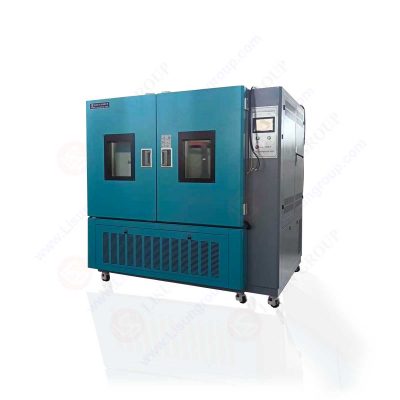

In today’s automotive manufacturing industry, quality inspection is a critical step to ensure the quality and performance of products. As automotive technology advances and consumer demands for vehicle performance increase, testing methods and equipment must continually evolve. High-low temperature cycling test chambers which can simulate extreme temperature environments, have become increasingly important in the testing of automotive products.
Simulating Real-World Conditions
As an outdoor mode of transportation, cars often face complex and variable climatic conditions, such as the severe cold of winter and the intense heat of summer. These extreme environments pose significant challenges to the performance and reliability of vehicles and their components. High-low temperature cycling test chambers can simulate temperature environments ranging from several degrees below zero to several degrees above zero, providing a testing platform that closely mirrors real-world conditions for automotive products. By conducting repeated tests in such environments, the performance of automotive products can be evaluated more accurately, ensuring stable and reliable operation under various climatic conditions.
Exposing Potential Issues
During the production of automotive products, potential problems or defects may arise due to material flaws, improper processes, and other factors. These issues may be difficult to detect in normal temperature environments but can become apparent under extreme temperature conditions. High-low temperature cycling test chambers accelerate the manifestation of these issues by simulating extreme temperature environments, helping inspectors identify and resolve problems promptly, thus avoiding potential safety hazards. For instance, certain plastic components may become brittle in low-temperature environments or soften and deform in high-temperature conditions. High-low temperature tests can identify these issues in advance and facilitate improvements.
Improving Product Quality and Reliability
High-low temperature cycling test chambers not only simulate real-world conditions and expose potential issues but also comprehensively evaluate the quality and reliability of automotive products. By repeatedly testing under different temperature environments, various performance indicators of automotive products, such as power performance, braking performance, and fuel economy, can be assessed. This ensures that automotive products meet preset standards and requirements under all conditions, thereby improving overall quality. Such tests allow for the optimization of product design and material selection, enhancing the reliability and durability of automotive products, and improving the driving experience and satisfaction of consumers.
Meeting Industry Standards and Regulatory Requirements
As the automotive industry evolves, governments and industry associations worldwide are imposing increasingly stringent standards and requirements on the quality and performance of automotive products. These standards and requirements often pertain to how automotive products perform under different temperature conditions. High-low temperature cycling test chambers, which can simulate extreme temperature environments, have become essential tools for meeting these standards and requirements. Through high-low temperature cycling tests, automotive manufacturers can ensure that their products comply with relevant standards and regulations, thereby obtaining market entry qualifications and gaining consumer trust. For example, European ECE regulations and American FMVSS standards have specific requirements for vehicle performance under varying temperature conditions. Using high-low temperature test chambers to conduct tests is a crucial method for meeting these regulatory requirements. LISUN Temperature Humidity Chamber | Thermal Chamber | Climate Chamber simulate different climatic conditions, such as heat-endurance, cold endurance, dryness-endurance and humidity-endurance which defines the performance of material. By testing the product under different climatic conditions to see whether its performance can meet the intended requirements. It is widely used to test the CFL/LED, electricity products, automative cars, home appications and mobiles. This series of aging test chamber is suitable for the reliability test of industrial products. It has the characteristics of temperature control precision and wide control range.
High and Low Temperature Humidity Chamber
Practical Applications of High-Low Temperature Cycling Test Chambers
In practical applications, high-low temperature cycling test chambers are widely used in various aspects of automotive products, including engines, electronic control systems, transmission systems, and body materials. For instance, when testing engines, high-low temperature test chambers can simulate the startup performance and operational stability of engines under extreme temperature conditions. In the testing of electronic control systems, these chambers can assess the reliability and response speed of electronic control units under temperature variations. For transmission system testing, they can evaluate the durability and performance of gearboxes and drive shafts at different temperatures. These tests provide scientific evidence for the improvement and optimization of automotive products.
Conclusion
High-low temperature cycling test chambers are essential equipment for automotive product testing. They can simulate real-world conditions, expose potential issues, improve product quality and reliability, and meet industry standards and regulatory requirements. Through high-low temperature cycling tests, automotive manufacturers can ensure the stable performance of their products under various extreme conditions, thereby enhancing market competitiveness. As automotive technology continues to advance, high-low temperature cycling test chambers will play an increasingly important role in future automotive product development and quality control. https://www.lisungroup.com/news/technology-news/the-importance-of-high-low-temperature-cycling-test-chambers-in-automotive-product-testing.html


Comments
Post a Comment